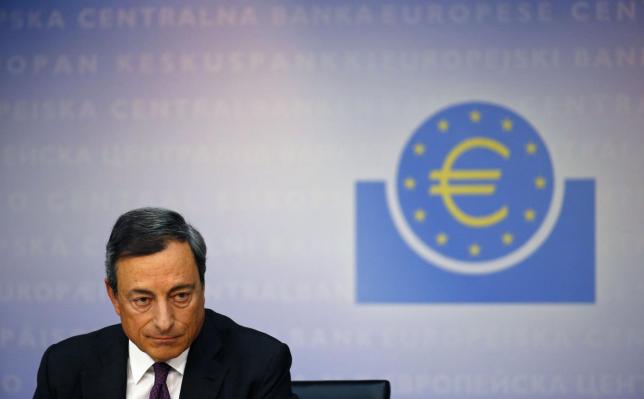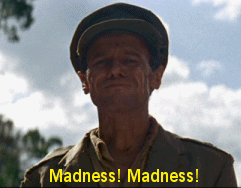
Back in June of 2014, the European Central Bank (ECB) made a historic and downright diabolical announcement – they inaugurated negative interest rates for overnight deposits. Here are the details from the official transcript:
The rate on the deposit facility was lowered by 10 basis points to -0.10 percent. These changes will come into effect on 11 June 2014. The negative rate will also apply to reserve holdings in excess of the minimum reserve requirements and certain other deposits held with the Eurosystem.
Lowering interest rates is by no means a new policy for central banks.
The last century is replete with examples of this abuse of power and its corresponding consequences. ZIRP (Zero Interest Rate Policy) is inherently inflationary. It punishes savers by siphoning away yield on capital. The ugly consequence is that more and more capital must chase increasingly risky speculations in order to gain a return. For the last five years the US, the Eurozone and other central banks have been frolicking in ZIRP land. Last week’s decision by the ECB to cross the border into negative territory marks a historic event. It shows just how far central banks are willing to go down the rabbit hole of a monetary madness.
Why negative interest rates?
In policy terms, this is really no different than asking “why zero interest rates?”
The scripted answer from Mario Draghi (Yellen for that matter) is, “… the measures will contribute to a return of inflation rates to levels closer to 2 percent.”
Central banks are terrified of deflation more than inflation. By deflation they mean a general fall in aggregate prices. They point back to the Great Depression and the 2008 financial collapse as particularly bad episodes of deflation they don’t want to relive. That is partly why, as prices plummeted during the financial crisis, they intervened with extraordinary and unconventional measures (TARP, ZIRP, Bailouts, QE, etc.). They want to see a general and continual increase in prices. This isn’t an opinion, it is part and parcel of their official mandate.1
They strive to achieve this goal by expanding the total supply of credit, getting more euros (or dollars) in the hands of more people with the hopes they will spend those euros on something, thereby raising the price of that something. While ZIRP already does this as it lowers the cost of borrowing, negative interest rates go one step further. A negative deposit rate means the ECB is actually going to charge you .10 percent to keep your money “safe” in risk free assets such as short term government paper. The ECB’s relationship with European banks is akin to the proverbial carrot or stick method of getting what you want. ZIRP may be the carrot, while negative rates are the stick.
Of course banks are not bunnies and neither are business owners. They do not always respond uniformly the way central banks would prefer them to. As in all cases of central planning, this decision will have unintended and costly consequences. Let’s look at three different ways this could play out.
Expanding the Supply Does Not Create Demand
You can show someone the door but you can’t make them walk through it. The market for credit, like any other market, is a two-way street. Simply expanding the total supply of credit is only half of the intended exchange. It will sit there idle unless adequate demand arrives. It’s important to remember the context of the ECB’s decision. We are five years into ZIRP land — credit has not been particularly hard to come by — the market has been saturated with it. In Europe (like in the US) banks are sitting on large piles of reserves. Draghi hopes to drive those banks into lending. But increasing the supply of credit and charging banks to keep capital on the sidelines does not magically make corporations or individuals creditworthy. For many, especially among the struggling countries of Europe, it simply does not make sense to go back into debt when they are still coming out from under the first (or second) wave. In general, businesses are not thriving and unemployment is still rampant. Are corporations in those countries really ready to take on more debt? Is the bank really going to lend to them?
Look at it from the bank’s perspective. If given the choice between paying .10 percent to keep your capital safe, or lending capital to corporations who are struggling to pay off prior debts, which would you choose? With the potential for much larger losses looming through default or bankruptcy, paying .10 percent doesn’t seem that bad. Charging negative interest rates might not do as much as Draghi hopes they will.
Unintended and Potentially Dangerous Consequences
On the other hand, and let’s pray this is not the case, Draghi might get his way. By punishing banks to play it safe, he might force them to start playing more dangerously. Maybe the bank’s margins are getting squeezed and their business cannot afford to avoid the .10%, so they start lending to whomever they please. The creditworthiness of their borrowers takes a back seat. Some will see an opportunity here. Junk debt gets wrapped up in secure (and attractive) looking bundles. Knowing the bank’s back is against the wall they have a good shot to get approved. Negative interest rates make it increasingly costly for the bank to use discretion in lending because now they will have to pay (.10 percent or more) to use discretion. This is certainly the worst-case scenario because it introduces the perverse incentive to engender a whole new round of toxic debt with even greater potential for default. You’ve seen it before, it’s the financial crisis all over again.
But it never looks that way at first. At first, things look great! And yet, as everyone seems to forget, it’s the boom phase of the business cycle where the mis-allocation of capital resources occurs. Prices are rising, credit is easy, there is overwhelming pressure on businesses to adapt to the new “thriving” business climate. All the while capital is being deployed not to its highest and most sustainable use. Rather it’s being directed (and diverted) according to the rigged game the central bankers are playing.
Rigged games are unsustainable. When the boom runs out of gas, either gradually or suddenly, these mis-allocations of capital bubble to the surface. Remember Lehman was fine, until it wasn’t. And to top it all off, in one of the most infuriating ironies of this financial theater, the very institutions responsible for encouraging this destructive behavior are the same ones who show up “to the rescue” when it comes burning down.
The Hotel California of Money
Furthermore, even if the banks lend out their reserves many of them will end up right back in the banking system. This just makes Draghi look silly. Keith Weiner has a great article in Forbes where he says,
Cash never leaves the banking system. It is a closed loop, with money transferring from one party to the next, but always remaining in the custody of a bank. Lending does not avoid the need to deposit cash at the ECB, or in the US, at the Federal Reserve.
When you borrow money from a bank, does the bank actually give you the total sum in stacks of colorful paper? No, what you receive from the bank is a record in your account of increased credit from the bank. Nothing goes in or out of the bank. It stays right there. This is as true for large scale financing as it is for you and me. Lending does not circumvent having to deposit cash at a bank.
It’s a closed loop system and there is literally no way out. Debts are merely shifted, not extinguished. This isn’t a bug or anomaly in our monetary system today. It’s a feature. It’s the “Hotel California” system of money and credit.
Relax, said the night man
We are programmed to receive
You can check out any time you like
But you can never leave!
What is more likely to happen and why it’s not any better
While seemingly in a tight fix the banks do have an escape route, albeit a short lived one. The way out for banks is to buy government bonds. Indeed, this is what they have already been doing. Look at the charts below for the Spanish and Italian 10-year bond yields.
Spanish 10-year Yield

Credit: Bloomberg
Italian 10-year Yield

Credit: Bloomberg
The interest rate is inverse to the price of a bond. If banks are buying government bonds, then the bond’s price will be bid up, and the yield will be pushed down. Look at the charts. Since the announcement on June 5, both rates have fallen considerably.
This would seem to solve the banks problem, but as I said, it’s not a long term solution. Why? Because this trade ends right where we began – in negative interest rates. This time not on overnight deposits at the ECB, but on longer maturity government debt. The more government debt banks buy the lower they will push the interest rate until eventually it also crosses the threshold of the land of the living into negative territory.
Conclusion: Madness! Madness!
The result of Draghi’s decision will not lead to an increase in prices, new businesses, or increased consumer spending. But it will serve to provide an even lower interest rate on government debt which will allow already insolvent governments to borrow more money and therefore more easily rollover their existing debt obligations. When one stops to think about it, one has to ask, was that the real reason why the ECB decided to impose this in the first place? Could all the pseudo-academic speak be just a disguise for the real objective: Central banks exist to make it easier for insolvent governments to borrow more money. Period.

A version of this article was originally published at Mises.org